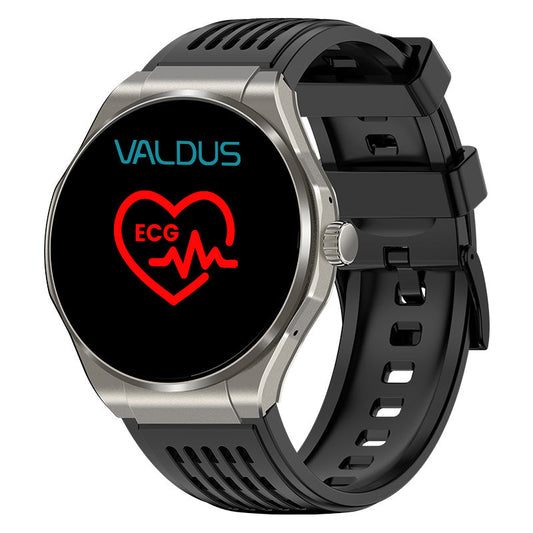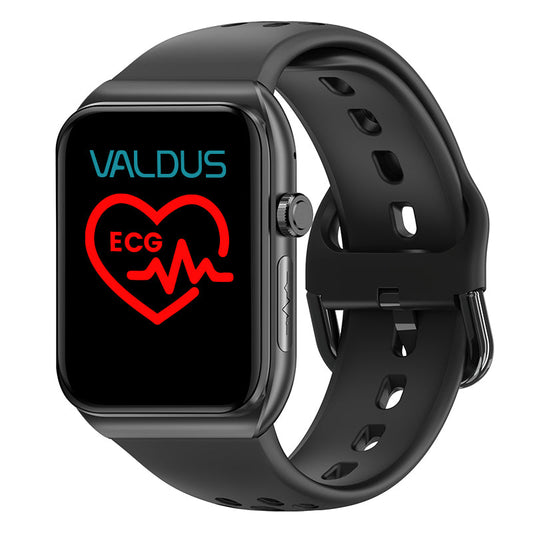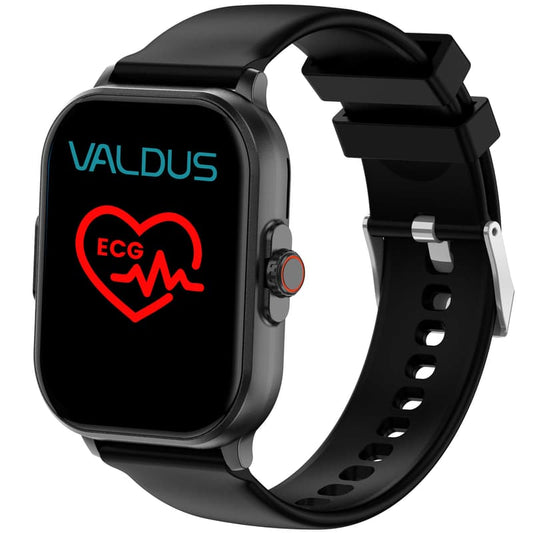
ECG vs EKG: Clearing Up the Confusion
Share
Electrocardiograms are fundamental tools in cardiology, providing vital information about heart health. But is it ECG or EKG? If you've found yourself confused by these terms, you're not alone. Despite being used interchangeably, they do have subtle differences rooted in history, language, and usage. This article aims to clarify the confusion between ECG and EKG, exploring their definitions, applications, and importance in modern medicine.
Introduction
When it comes to heart monitoring, the terms ECG and EKG often pop up, sometimes causing confusion. Both refer to the same medical test, but their usage depends on geographical and linguistic differences. Understanding the distinction between ECG and EKG is crucial, not only for medical professionals but also for anyone interested in their heart health.
This comprehensive guide will walk you through everything you need to know about ECG and EKG, highlighting their differences, similarities, and why the distinction exists in the first place. By the end, you'll have a clear understanding of these terms and their significance in cardiology.
What is an ECG?
An Electrocardiogram (ECG) is a non-invasive test that measures the electrical activity of the heart. It records the timing and strength of these electrical signals as they pass through the heart, which can help in diagnosing various heart conditions such as arrhythmias, heart attacks, and other cardiac disorders.
What is an EKG?
EKG stands for Elektrokardiogramm, which is simply the German spelling for the same test. The "K" in EKG comes from the German word "Kardio," meaning heart. In essence, ECG and EKG are identical tests, with EKG being the preferred term in countries like Germany and some parts of Europe.
Historical Context: Why Two Names?
The dual terminology stems from the early 20th century when Dutch physiologist Willem Einthoven developed the first practical ECG machine. He initially used the German spelling, which led to the widespread adoption of EKG in Europe. As the technology spread to English-speaking countries, the term ECG became more common, though EKG persisted, particularly in older literature and among those trained in European medical traditions.
Technical Explanation of ECG/EKG
Both ECG and EKG work by placing electrodes on the patient's skin to detect electrical signals generated by the heart. These signals are then recorded and displayed as a waveform on a monitor or printed on paper. The waveform consists of several parts, including the P wave, QRS complex, and T wave, each representing different phases of the heart's electrical cycle.
Common Uses of ECG/EKG in Medicine
The ECG/EKG is a versatile tool used in various medical settings. It's often the first test performed when a patient presents with symptoms like chest pain, shortness of breath, or palpitations. Here are some common applications:
- Diagnosing Heart Attacks: ECG/EKG can detect signs of a heart attack by identifying abnormalities in the heart's electrical activity.
- Detecting Arrhythmias: Irregular heart rhythms, such as atrial fibrillation, can be diagnosed through this test.
- Monitoring Heart Health: Regular ECG/EKG tests can help monitor the effectiveness of treatment for various heart conditions.
- Pre-surgical Assessment: Before surgery, an ECG/EKG is often performed to assess the risk of cardiac complications.
Interpreting ECG/EKG Results
Interpreting an ECG/EKG requires specialized knowledge, as it involves analyzing the waveform's shape, duration, and intervals. For instance, a prolonged QT interval might indicate a risk of dangerous arrhythmias, while ST-segment elevation could suggest an ongoing heart attack.
ECG vs EKG: Which Term Should You Use?
In most English-speaking countries, ECG is the standard term used by healthcare professionals. However, EKG is still widely recognized and used, especially in academic contexts or by those with training in European medical systems. When discussing heart tests with your doctor, either term is acceptable, but ECG is more universally understood.
Why the Confusion?
The confusion between ECG and EKG primarily arises from the use of different languages and medical training traditions. In practice, they are the same test, and the choice of term often comes down to personal or regional preference.
The Role of ECG/EKG in Cardiology
ECG/EKG plays a critical role in cardiology, serving as a frontline diagnostic tool. It provides valuable insights into the heart's electrical activity, which can be pivotal in diagnosing and managing heart disease. Whether you refer to it as ECG or EKG, the test remains a cornerstone of modern cardiac care.
ECG/EKG in Emergency Medicine
In emergency settings, ECG/EKG is indispensable. For patients presenting with acute chest pain or other symptoms suggestive of a heart attack, an ECG/EKG is often performed immediately. Rapid interpretation of the results can guide life-saving interventions, such as thrombolysis or angioplasty.
Advancements in ECG/EKG Technology
Over the years, ECG/EKG technology has evolved significantly. Modern machines are more compact, user-friendly, and capable of providing more detailed information. Additionally, advancements in digital health have enabled remote ECG/EKG monitoring, allowing patients to be monitored in real time from their homes.
ECG/EKG in Sports Medicine
Athletes often undergo ECG/EKG testing as part of their pre-participation physicals. This is especially important for detecting conditions like hypertrophic cardiomyopathy, which can increase the risk of sudden cardiac death during intense physical activity.
Understanding ECG/EKG Waveforms
The waveform produced by an ECG/EKG consists of several distinct parts:
- P Wave: Represents atrial depolarization.
- QRS Complex: Represents ventricular depolarization.
- T Wave: Represents ventricular repolarization.
Each part of the waveform provides specific information about the heart's electrical activity and can indicate normal or abnormal cardiac function.
ECG/EKG in Telemedicine
With the rise of telemedicine, ECG/EKG technology has adapted to allow remote monitoring. Portable ECG/EKG devices can transmit data to healthcare providers, enabling real-time assessment and intervention. This is particularly beneficial for patients with chronic heart conditions or those living in remote areas.
ECG/EKG and Heart Disease Screening
Routine ECG/EKG testing is often part of heart disease screening programs, especially for individuals at high risk, such as those with a family history of heart disease, high blood pressure, or diabetes. Early detection of abnormalities can lead to prompt treatment and better outcomes.
ECG/EKG in Pediatric Cardiology
Pediatric cardiologists also rely on ECG/EKG to diagnose congenital heart defects, arrhythmias, and other cardiac issues in children. The interpretation of pediatric ECG/EKGs requires specialized knowledge due to the differences in heart rate and waveform patterns in children compared to adults.
The Future of ECG/EKG Testing
The future of ECG/EKG testing looks promising, with ongoing research focused on improving accuracy, portability, and ease of use. Innovations such as AI-assisted ECG/EKG interpretation and wearable devices are set to revolutionize how heart health is monitored.
FAQs
What is the main difference between ECG and EKG?
The main difference is linguistic. ECG stands for Electrocardiogram, the English term, while EKG stands for Elektrokardiogramm, the German term. Both refer to the same test.
Can ECG and EKG detect a heart attack?
Yes, ECG/EKG can detect signs of a heart attack by identifying abnormalities in the heart's electrical activity.
Is EKG still used in modern medicine?
Yes, EKG is still used, particularly in Europe and in academic settings. However, ECG is more commonly used in English-speaking countries.
How does an ECG/EKG work?
ECG/EKG works by placing electrodes on the skin to detect the heart's electrical signals, which are then recorded and analyzed.
Why is ECG preferred over EKG in English-speaking countries?
ECG is preferred because it aligns with the English spelling and pronunciation of Electrocardiogram, whereas EKG reflects the German spelling.
Are there any risks associated with ECG/EKG?
ECG/EKG is a safe, non-invasive test with no significant risks. It involves only the placement of electrodes on the skin.
Conclusion
Understanding the distinction between ECG and EKG is essential for anyone interested in their heart health. While the terms are used interchangeably, knowing the historical and linguistic roots can clear up any confusion. Whether you're a medical professional or a patient, recognizing that ECG and EKG are two sides of the same coin will enhance your comprehension and communication regarding heart health.





